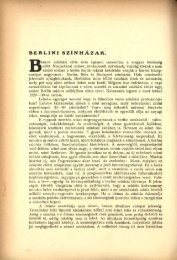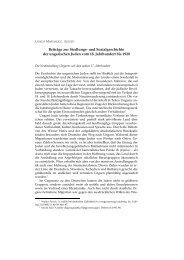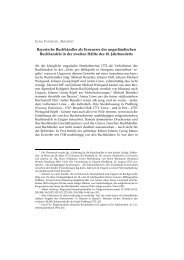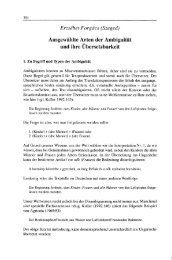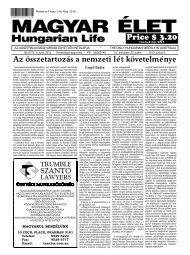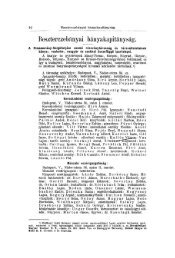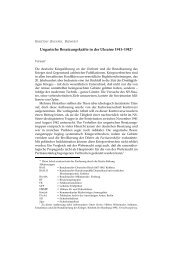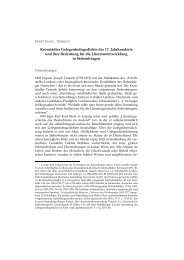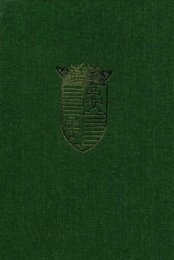Journal of Eurasian Studies - EPA
Journal of Eurasian Studies - EPA
Journal of Eurasian Studies - EPA
Create successful ePaper yourself
Turn your PDF publications into a flip-book with our unique Google optimized e-Paper software.
April‐June 2010 JOURNAL OF EURASIAN STUDIES Volume II., Issue 2.<br />
_____________________________________________________________________________________<br />
had happened many times in the history <strong>of</strong> Central Asia, in this case too, the strongest tribe took over the<br />
leadership. They were the Avars. The Indian sources mention that, in the Caucasus, they were joined by<br />
some other Avar and Hun tribes, who had settled down there earlier. 48 They were most probably the<br />
descendants <strong>of</strong> Atilla.<br />
According to the ancient document, the Derbendname, Kushrew Anushirwan II settled a part <strong>of</strong> the<br />
Hephtalite‐Avar tribal confederation in two towns on the territory <strong>of</strong> present Dagestan. These two towns –<br />
now in ruins – are called Kichi Majar and Ulu Majar. 49<br />
However, there still remained a part <strong>of</strong> the tribal confederation, mainly the warriors and the leaders,<br />
who did not want to settle in the Caucasus; it was not a safe place for them because <strong>of</strong> the pursuit <strong>of</strong> the<br />
Turkic army. So they marched toward Byzantium at a great speed. In 568 A.D., the Byzantine sources<br />
write about them, mentioning the name <strong>of</strong> their commander, kagan Bayan. He asked the Byzantine<br />
Emperor, Justinianus II, for permission to settle somewhere in the Empire. The history <strong>of</strong> the Avars is<br />
well‐known; they are the direct ancestors <strong>of</strong> the Hungarians.<br />
BIBLIOGRAPHY:<br />
Ammianus Marcellinus XVI,9.4.<br />
Aradi Éva: A fehér hunok története in Magyarságtudományi tanulmányok, HUN‐idea, Bp., 2008.<br />
Aradi Éva: A hunok Indiában – A heftaliták története. HUN‐idea, Bp., 2005.<br />
Aradi Éva: Egy szkíta nép: a kusánok – A Hold fiainak története. HUN‐idea, Bp., 2008.<br />
Bongard‐Levin, G.M. – Grantovskij, E.A.: Szkítiától Indiáig. Gondolat, Bp., 1981.<br />
Bracey, Robert: Kushan History, Wikipedia, 2007. www.kushan.org.<br />
Bühler: Epigraphia Indica. Delhi, 2000, reprint.<br />
Czeglédy Károly: Heftaliták, hunok, avarok, onogurok in Magyar Nyelv, No.50, Bp.1954.<br />
Dani, A.H. – Litvinsky, B.A.: Cities and Urban Life in the Kushan Kingdom, in History <strong>of</strong><br />
Civilization in Central Asia, Vol. 2., chapter 10. 1994. Unesco Publ.<br />
Han‐shu 61.4B. Tr. by John Hill.<br />
Heliov, Mübariz – Nyitray Szabolcs: Ősmagyarok Azerbajdzsánban. HUN‐idea, Bp., 2008.<br />
Indicopleustes, Cosmas: Christiana Topographia, Collectio Nova patrum et Scriptorum Graecorum, II.<br />
tr. by McCrindle, 1897, publ. by the Hakluyt Society.<br />
Kalhana: Rajatarangini Vol.II. tr. by Aurel Stein, Oxford, 1900.<br />
Khorenei, Mozes: Nagy Örményország története. Ford.: Szongott Kristóf, Szamosújvár, 1892,<br />
utánnyomás.<br />
Mahajan: Ancient India. Delhi, 2003.<br />
48 Romila Thapar: ibid. p.270.<br />
49 Mübariz Heliov – Nyitray Szabolcs: “Ősmagyarok Azerbajdzsánban”, Hun Idea, 2008. Bp.<br />
_____________________________________________________________________________________<br />
© Copyright Mikes International 2001‐2010 55


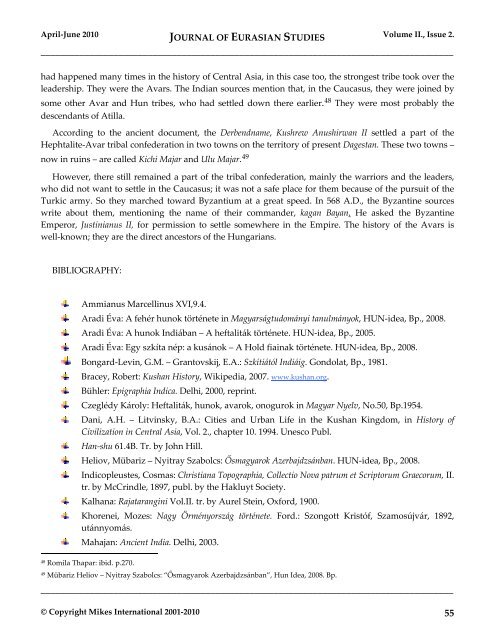
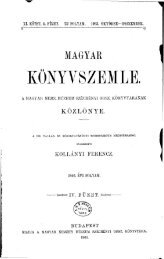
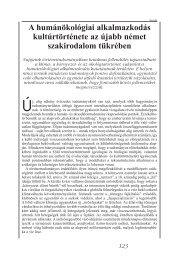
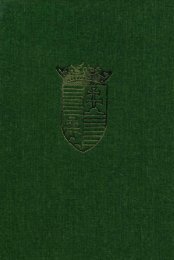
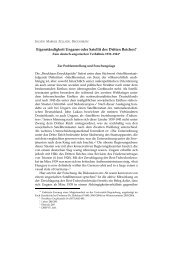
![Letöltés egy fájlban [36.8 MB - PDF] - EPA](https://img.yumpu.com/23369116/1/172x260/letoltes-egy-fajlban-368-mb-pdf-epa.jpg?quality=85)
